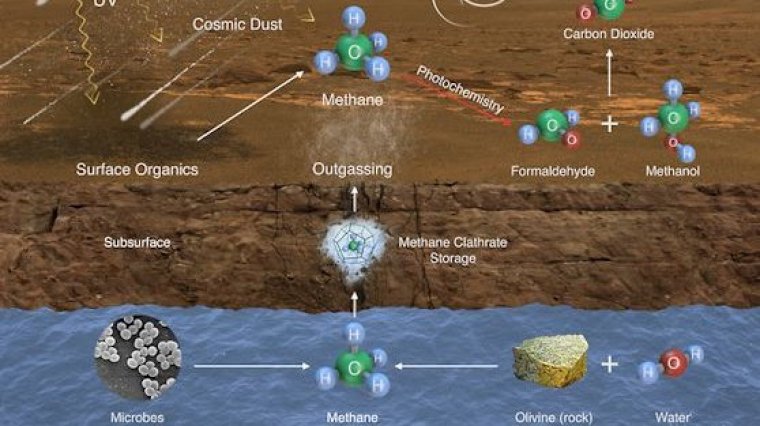| News / Space News |
Curiosity Detects Methane Spike on Mars
NASA | DECEMBER 20, 2014
NASA's Mars Curiosity rover has measured a tenfold spike in methane, an organic chemical, in the atmosphere around it and detected other organic molecules in a rock-powder sample collected by the robotic laboratory’s drill.

This image illustrates possible ways methane might be added to Mars' atmosphere (sources) and removed from the atmosphere (sinks). ![]()
This temporary increase in methane -- sharply up and then back down -- tells us there must be some relatively localized source, biological or non-biological, such as interaction of water and rock.
Curiosity also detected different Martian organic chemicals in powder drilled from a rock dubbed Cumberland, the first definitive detection of organics in surface materials of Mars. These Martian organics could either have formed on Mars or been delivered to Mars by meteorites.
Organic molecules, which contain carbon and usually hydrogen, are chemical building blocks of life, although they can exist without the presence of life. Curiosity's findings from analyzing samples of atmosphere and rock powder do not reveal whether Mars has ever harbored living microbes, but the findings do shed light on a chemically active modern Mars and on favorable conditions for life on ancient Mars.
Researchers also reported that Curiosity's taste of Martian water, bound into lakebed minerals in the Cumberland rock more than three billion years ago, indicates the planet lost much of its water before that lakebed formed and continued to lose large amounts after.
YOU MAY ALSO LIKE



